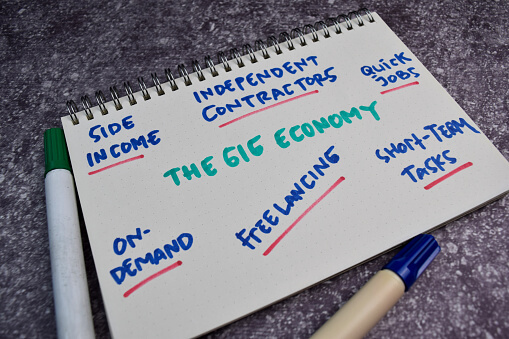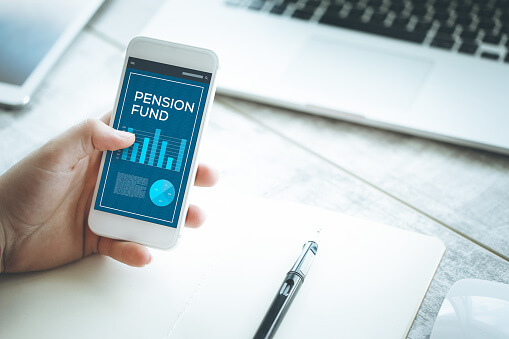A side hustle is a great way to make extra money to help with financial goals like paying down student loans or saving for a car or home. Taxes are more complicated for gig economy workers than with a regular full-time job.
A side gig will generally implicate that you must file self-employment taxes. This triggers a different set of rules, tax forms, and leads to many tax questions. It's common for those who just started a side hustle to be shocked by how much they owe on their tax bill.
There are tax advantages to that side hustle income and being aware of them can help reduce their taxable income. For example, with a side hustle, there are ways to deduct legitimate business expenses and even save for retirement.
Unfortunately, independent contractors rarely take advantage of these opportunities to reduce their income taxes when it's tax season. let's talk more about how you can maximize your tax situation with a side hustle and the considerations you should make.
Note: The best way to avoid paying taxes on side gigs is by maximizing all your tax deductions. Bonsai Tax can help with that. Our app will scan your bank/credit card receipts to discover potential tax deductions and capture all your write-offs. Users typically save $5,600 from their tax bill. Try a 7-day free trial today.
What Happens if you Don't Report your Taxable Income?
Today, people are picking up gig income through side hustles like selling artwork on Etsy to delivering food with Door Dash. Over 69.8 million people in the United States have jumped into the gig economy without paying taxes on their pay.
Income that is earned through a side gig is considered self-employment and you must file taxes with your personal income tax return. An independent contractor risks several potential implications if they fail to report their self-employment income including:
- Charged 5% of unpaid hustle income for each month the return is late
- 0.5% penalty for each month you owe if you did file your tax return but did not report the income on our tax bill (up to 25%)
- Continuing to ignore taxes could lead to the IRS taking action such as forfeiting your refund, seizing the property, filing charges against you, or revoking our passport.
It's not worth these possible consequences to avoid reporting your self-employment income on your tax return.
When do you Pay Taxes on your Hustle Income?
According to the IRS, the gig economy includes "activity where people earn income providing on-demand work, services, or goods". This includes services like running errands, selling products online, and ride-sharing. Basically, if you're making extra income from any of the companies like Etsy, Instacart, Uber, and Lyft, you're likely to have to pay for income taxes.
The IRS considers anyone that makes non-W-2 income as an independent contractor. Even if you have a job with a W-2 income in addition to that side gig, you're still given this classification.
A self-employed individual is subject to 15.3% self-employment tax and federal income tax. By making estimated tax payments each quarter, you can help pay your tax bill.
How Much Money Must You Earn With A Side Hustle To Pay Taxes?
If any one of your gigs earns you a side hustle income above $400, then you must include that earning in your tax return. A company or individual that pays you more than $600 should provide you with a Form 1099-NEC for nonemployee compensation to file your tax return.
Payments for side hustle income through online payment services like PayPal are reported through the 1099-K form. These forms are sent to the IRS to report federal income taxes by the payer.
Self-employment income from payers that send these 1099 forms is to be sent by January 31st. It should include how much you owned and any withholdings from taxes that were paid out.
Although it is not common, side gig money that's earned throughout the year might not be reported. Even if you don't receive a form to file during the tax season, you must still report your earnings.
This situation often happens for an independent contractor who earned less than $600 from a side gig. The payer doesn't have to send you a form, but you will still owe taxes and must file through earnings.

Key Differences of Filing Taxes as Self-Employed
With regular W-2 jobs, your deductions are automatically taken out of your paycheck each time you get paid. This includes social security and medicare taxes. The money never even reaches your bank account.
But when you're self-employed, you take on the responsibilities of both the employer and employee. What that means is that you should pay estimated taxes on a quarterly basis, according to tax pros.
Your estimated tax is actually quite easy to manage throughout the year. As long as you track your income and expenses, you can accurately calculate your estimated taxes.
In addition to these quarterly tax payments, you also need to file your taxes in April. This is also when you find out if the estimated taxes you've been paying is sufficient (you may even be eligible for a refund) or you need to pay more or receive an underpayment fine.
How to Pay Estimated Taxes on your Tax Bill
The U.S. income tax is a pay-as-you-earn system. This enables the government to have access to funds all year long.
Making incremental payments on your net earnings will also alleviate receiving a huge tax bill by the year's end.
Most self-employed individuals can use Form 1040-ES to make estimated payments on their taxes by April 18th. Make your estimated payments using this form on a quarterly basis (April 15, June 15, September 15, and January 15 of the following year). Read more on how to file estimated taxes here.
For each payment period, your cash payments are due on the next business day if these deadlines fall on a federal holiday or weekend.
A good rule of thumb is to set aside 20-35% of the money you make from your side hustle for taxes. This should ensure that you'll have enough funds to cover your income taxes and self-employment taxes.
You might consider having a separate checking account for your gig income to manage the taxes more efficiently.
Avoid Tax Penalties
There is another good reason why you should pay estimated taxes on a quarterly basis. It will actually keep you from owing more in penalties.
Taxpayers are expected to pay at least 90% of their total federal income tax liability over the course of a year. If you don't meet this target, you could pay additional penalties.
The estimated tax penalties could be as much as several hundred dollars. Avoid this underpayment penalty by making accurate estimated taxes on your quarterly payments.

How To Use Tax Deductions To Lower Your Tax Liability
No one likes to make tax payments, but not following the tax rules can put you in a bad situation. Luckily there are plenty of ways to reduce how much you may have to pay when it's tax time. Of all the tax hacks to save money, business expenses can lead to the most significant deduction.
The expenses that you can deduct when you earn money from a side business must meet some criteria. There are the ordinary expenses that your small business will come across as common. These are accepted costs for running your business.
Then there are the small business costs that are necessary which help you run it. An "ordinary expense" for a freelance ski teacher might be deducted from their ski boots. For landscaper tax deductions, the storage space that they rent out to keep their tools and equipment would be considered a "necessary expense"
Having a side gig gives you the benefit that other self-employed workers than have their own business can enjoy. Let's talk about some of the dedication that you might be able to use to reduce your taxes.
Ordinary and Necessary Expenses
This type of expense that's deemed ordinary and necessary have the following criteria:
- Ordinary expenses - expenses that are common and acceptable in your field of business
- Necessary expenses - expenses that are helpful and appropriate for your business; May not have to be considered indispensable to qualify as necessary
Uber drivers that provide riders with bottles of water and other items could be placed under this category.
.jpeg)
Business Expense
Tax pros would tell you to look for every business expense that you could deduct as a self-employed individual. You're eligible to deduct certain expenses when you file your taxes that aren't available for W-2 workers.
One example of this is with the pay that you earn as a ride-sharing driver. You should be tracking your mileage on your car when using your car for this type of service.
That mileage can be deducted on a per-mile basis. Other common expenses that can be deducted for the tax year include:
- The business portion of your home
- Dues and subscriptions that are business-related
- Needed tools and equipment
- Tuition for work-related education and training

Home Office Deduction
Employees can't claim the home office deduction off of their net earnings. Regardless of if they are required to work from home such as during pandemic times, this deduction can be claimed.
If you are self-employed and own your own small business, you may qualify. To qualify for the home office deduction, you must:
- Use the space exclusively and regularly - The portion of your home that's used in your home or property must be used regularly for business use. Whether it's an apartment, home, condo, mobile, home, boat, garage, workshop, or barn, these spaces can qualify. Spaces such as a bed and breakfast, inn, or used in a related hospitality business don't apply.
- The central location of your business activities - The home office must be your principal place of business. It can also be the location where you meet with customers on a regular basis. The exceptions to this would be if you operate a storage facility or daycare.
Keeping Solid Records For Your Tax Return
If you plan on having deductions to report when you file your taxes, you must keep good records. The IRS looks at the taxes of an independent contractor more closely than others.
This is because the 1040s by these types of workers aren't verified by third-party tax statements. Be sure to keep all your tax receipts in the event that you get audited.
Keeping a separate credit card for your business expenses is also a good idea.
Note: If you want an app to categorize and organize all your receipts for you, then try Bonsai Tax. Our software will review your bank/credit card statements to discover potential tax write-offs and track your expenses automatically. In fact, the majority of users save $5,600 from their tax bill. Claim your 7-day free trial today.

Consider Retirement Savings
You don't need a certified financial planner to tell you that you can't rely on your social security or savings account to cover retirement. These days, social security barely covers the necessities of retirees.
One of the best financial decisions you can make is leveraging your side income for retirement. This also reduces the taxes that you will pay today.
Among the best financial products for side, hustlers are the solo 401(k) and SEP IRA.
Solo 401(k)
You can put up to $57,000 into a solo 401(k) each year. 100% of your net self-employment income can be contributed to this fund.
There is more paperwork involved with setting up a solo 410(k) than a SEP IRA. The contribution limit is on a per-person basis.
This means that you have an employer's 401(k) or other retirement plans, your contributions may count against the cap.
SEP IRA
A simplified employee pension individual retirement account allows you to contribute up to 25% of your net self-employment income.
Like the solo 401(k), there is a cap of $57,000 per year. It is easier to set up than the latter, however.






